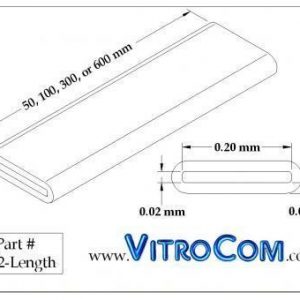LMM Biophysics 1
LMM Biophysics 1 (The Effect of Macromolecular Transport of Microgravity Protein Crystallization)
Experimental Approach of the LMM Biophysics 1 Investigation:
Four aqueous proteins, one membrane protein (P-glycoprotein) and one virus (tobacco mosaic virus, TMV), are selected with the proteins covering a broad range of molecular weights (i.e. ~10kDa to as high as 1,250kDa) and tobacco mosaic virus (TMV) which exhibits a particle diameter of 18.0 nm and a length of ~300 nm. Purified batches of protein and virus particles are produced and isolated in different aggregate populations as outlined in the paragraphs below. Inclusion of P-glycoprotein (an integral membrane protein) and TMV is based on experience within the Center for Biophysical Sciences and Engineering (CBSE) expressing and purifying large quantities, as well as crystallizing this particular membrane protein and virus. Other potential protein candidates include cytochrome c (~12kDa), Glutathione–S-transferase (31kDa) and Thioredoxin (16kDa), α-chymotrypsinogen (25kDa), equine or bovine serum albumin (both ~66kDa), and Xenorhabdus-A, XptA1 (1,250kDa). The CBSE has significant experience expressing, purifying and producing crystals of each of these proteins. The final proteins selected are primarily based on the stability evaluation of the higher order aggregates of each protein. Dr. DeLucas’s laboratory has access to more than 100 different aqueous proteins covering the molecular weight range discussed above. Thus, additional candidates are available if needed.
Specific Aim 1 of LMM Biophysics 1 (aggregate incorporation into growing protein crystals):
As noted in the introduction section, purified proteins generally exist in solution with some small percentage of aggregates (i.e. dimers, trimers, tetramers, etc.). The LMM’s confocal fluorescent microscope is used to estimate the percent incorporation of aggregates into growing crystals of several different proteins.
Specific Aim 2 of LMM Biophysics 1 (comparison of µg versus 1-G crystal growth rates):
Specific Aim-2 is accomplished using the identical protein preparation methods as for specific aim-1. Once the growing crystals are identified via the microscope (or any LMM light microscope with 25x to 50x magnification), a series of images is taken over a period of 3 to 5 days to measure the crystal growth rates for each protein candidate. The growth rates for crystals grown in the microgravity environment are compared with 1-G control experiments for the same proteins. The effect of microgravity versus 1g on crystal growth rates is assessed for proteins of different molecular weights, and for protein solutions containing higher order protein aggregates. Solutions containing crystals are maintained in optical cells at either 4°C, or 22°C, and returned to earth for x-ray crystallographic analysis to assess crystal quality.
Specific Aim 3 of LMM Biophysics 1 (compare defect density/quality of crystals grown at different rates in 1g):
Dr. Christian Betzel (co-investigator from Univ. of Hamburg) recently developed a novel technology (Xtal ControllerTM) that provides a unique combination of diagnostic and control capabilities allowing real-time manipulation of the crystallization drop composition. Evaporation rates and crystal growth rates can be adjusted, thereby enabling a detailed comparison of crystal quality versus crystal growth rates. This unique crystallization system is utilized to achieve Specific Aim-3. Analysis of the quality of crystals grown at different rates is performed using atomic force microscopy [37, 38], and x-ray diffraction [11, 21]. The Xtal Controller is located in Dr. Betzel’s laboratory at the University of Hamburg. Both Dr. Betzel’s and Dr. DeLucas’ labs can use this unique system to precisely control key crystallization variables (i.e. protein concentration, temperature, precipitant concentration, additive concentrations) that affect the approach to nucleation, the nucleation event, and the crystal growth phase (figure 2) for each protein studied. Subsequent to the initial set up, which is performed locally, the crystallization experiment can be manipulated and controlled remotely, and followed by both groups on line. As crystal growth rate experiments for each protein are completed using the Xtal Controller, the resulting protein crystals are analyzed via x-ray diffraction and atomic force microscopy (AFM). The x-ray analysis is conducted at the Deutsches Elektronen-Synchrotron (DESY) in Hamburg, Germany using the high brilliant radiation of the storage ring PETRA III, and at the Argonne Synchrotron Facility in Chicago, Illinois. All AFM studies are conducted by Drs. DeLucas and Martyshkin using the facility available in Dr. Martyshkin’s lab in the Physics Building at UAB. A portion of crystals produced in Dr. Betzel’s laboratory are transported to the DeLucas’ laboratory in special thermally insulated containers by Dr. Betzel. In the event that freshly grown crystals must be analyzed prior to one of the planned regular research exchange visits, crystals are to be express mailed to DeLucas’ laboratory in special thermally insulated containers (a routinely used method to transport crystals maintained at 4°C or 22°C without any problems).
Science Objectives
Proteins are important biological molecules that can be crystallized to provide better views of their structure, which helps scientists understand how they work. Proteins crystallized in microgravity are often higher quality than those grown on Earth. The Effect of Macromolecular Transport on Microgravity Protein Crystallization (LMM Biophysics 1) studies why this is the case, examining the movement of single protein molecules in microgravity.
Applications
Space Applications
Researchers have crystallized thousands of proteins, but many of them are not high enough quality to allow scientists to view the proteins’ three-dimensional structure. One class of proteins, membrane proteins, represent potentially valuable targets for development of new drugs to treat disease, and previous research has suggested that microgravity may improve the quality of this class of important proteins. This investigation improves understanding of the physical processes that enable high-quality crystals to grow in space, where Earth’s gravity does not interfere with their formation.
Earth Applications
Crystallizing proteins allows scientists to determine their three-dimensional structure, which enables a better understanding of how proteins work and how they are involved in disease. Protein structure can be used to design new drugs that interact with the protein in specific ways. This investigation provides new insight into how microgravity affects protein crystal growth and quality, benefiting researchers studying protein structure to create new drugs to fight diseases.


